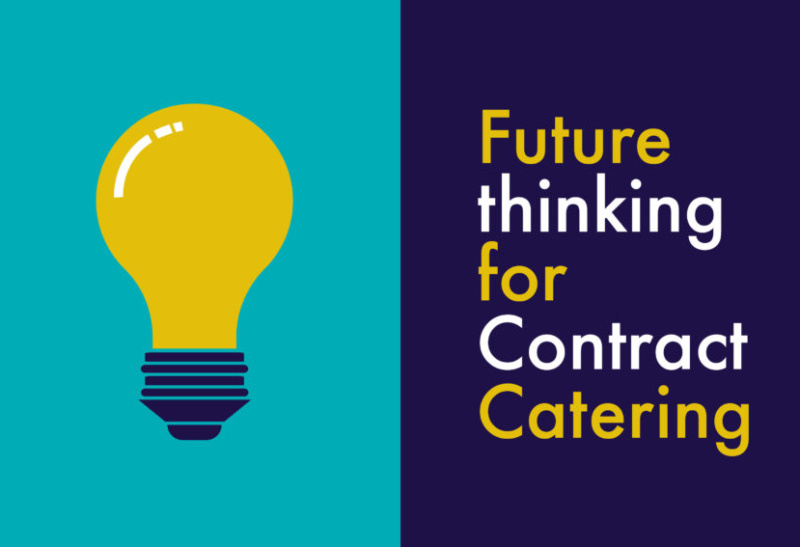Customised specialised offerings
Personalisation is changing the face of the food and drink industry and it is a great way to help you stand out from the competition by offering an experience that feels tailored and personal. 50% of people expressed interest in purchasing customised products or services, suggesting that personalisation is a way of tempting customers to eat at your outlet[1]. Not only does this encourage more customers to come into your sites, but it also encourages those who do come in to pay more, with 1 in 4 willing to pay more to receive a personalised product or service1. To meet the needs of your customers it is essential to make the process as clear and straight forward as possible, to avoid any potential frustration or confusion. To combat this, we recommend you try categorising choices, suggest combinations or have default options that may help make the decision making process clearer and easier.
If you want to know more on how you can adapt your offer with personalisation, please see our blog on why personalisation is a must.
High-street and food retail style concepts
High-street and food retail style offers that are more tailored for customers when choosing exactly what they want to eat/drink are to be one of the key operator-led growth drivers for contract caterers[2]. We already have a number of concepts like this available to our customers where we have partnered up with our suppliers to create branded offerings that are tailored to your customer need. If you want to know more about this, speak to your account manager.
Things to consider are the fact that more sites are looking to develop a food hall feel to their operation with market style operations, defined food concepts and exhibition kitchens to create a bit of theatre for their customers, so when you are benchmarking, look out for how others are doing this with their offer and see if it links with anything you can do to tailor it more for your customers.
Workplace catering quality as a selling point and employee benefit
45% of consumers think that quality is important when deciding where to buy food and drink out during the day[3]. In terms of the future, concepts are set to be more technology-driven by using data to do predictive analytics on customers to understand spending habits more and what they want to see. Not only this, but in the future the high-street will be able to bring customers closer to the food and the source of the food through technology such as virtual reality to showcase where it has come from[4]. This provides a fantastic opportunity for Contract Caterers to push the quality of their offer. As the growing trends towards sustainability and provenance continue, we can expect that outlets will embrace it more by doing things such as growing their own produce to provide further points of difference to the high-street and to enhance how their quality of food is perceived.
Prominent and multi-functional use of catering facilities
Linking heavily to the last point, you’ll be aware that workplace environments are constantly changing to encourage a healthier work lifestyle. You will more commonly find open spaces, game areas, gyms and break-out areas in and around catering facilities as organisations look to boost morale, productivity and how they can attract and retain talent. Key to satisfying employees with a healthy work lifestyle is by having the catering facilities to ensure that you can provide that by utilising your space better. To do this, Contract Caterers have to get rid of the old-school cafeteria feel as it appears dated. As I said before, more sites are now looking to develop a food hall feel to their operation with market style operations, defined concepts and exhibition kitchens to create a bit of theatre for their customers.
Grazing and additional day-parts
Snacking is huge in the workplace, in fact, 47% of trips to workplace restaurants are for a snack[5], with 71% of Brits snacking more than once a day[6]. Not only are we seeing snacking continue to grow, we are seeing the blurring of day-part meals happen as well. These days operators are more commonly adapting to this consumer need, resulting in 4 in 5 operators classing their business as ‘all-day dining’ or ‘casual dining’[7] as it is fantastic opportunity to increase customer spend all through the day. Another area of potential growth in the workplace is to provide pre-portioned meal options for customers to take home to reheat in the evening for those with busy lifestyles as they won’t necessarily have the time to make a meal.
When considering your options on how to tackle this factor, what’s important to consider is not necessarily having everything available in your range, but making sure you have the right offering throughout the day to appeal to the varying needs your customers have. Our “It’s Snack Time” brochure goes through our range, discussing how what you offer can make a difference throughout the day and it provides advice and pairing opportunities to consider.
To see more on this, click here!
External factors to also consider
So far we have discussed things that will be changing internally for contract caterers that you can take advantage of in the future, however there are external factors that you need to consider too which you can’t directly affect but you’ll need to adapt to:
- Record levels of employment: This is great for Contract Caterers now as that means there are more customers in the workplace, however, virtual working from elsewhere is set to become commonplace in the near future, with 60% of office workers expected to regularly work from home by 2022.[2]
- Aging demographics: In the UK we have an aging population where by 2030, a third of the population will be 60+. This can be positive as it means more people will be working for longer so there will potentially be more customers at your sites. However, it is also going to have a huge impact on the healthcare sector with significantly more people needing care. [2]
- Growing value consciousness benefiting lower-spend canteens: The number one factor that customers look for when eating in the workplace is good value for money[3]. Your outlet can improve customer value by understanding what it is that is important and valuable to your customers and reviewing the opportunities to offer them value. It isn’t necessarily about lowering prices, but making prices seem low in comparison to what you are offering.
- Growing of sustainability and diets with less-meat: People are becoming more aware of where their food is sourced, how sustainable it is, and then there is also the rise of diets like vegan, vegetarian, plant based and flexitarian. Our Bidfood Advice Centre can always assist with sustainability messaging of products, plus their sourcing, and our chef team have developed a wide array of recipes to support, some of which you can find by clicking here!
Overall, as consumer habits continue to regularly change, it is difficult to fully predict the future for the Contract Catering market. Technology and how it effects understanding consumer spending habits is set to be huge as it will allow contract caterers to be more specified with creating concepts to their needs throughout the day. With there being a higher emphasis on improving the workplace environment too, it is now essential that you adapt to become one of the biggest pulls for employees which you can do by continuously innovating and utilising your space better. If you want to know more on how we can help you can do this, please get in touch with your account manager.
[1] Deloitte, 2015
[2] MCA Contract Catering Report, 2017
[3] Daytime Diets and Meal Planning Research, ABA, 2018
[4] Foodservice equipment & supplies magazine, 2018
[5] PepsiCo Impulse Shopper research, 2016
[6] ISG ShopperVisa ‘Food To Go’, 2016
[7] CGA Bidfood all day dining thought leadership white paper, Sept 2017



